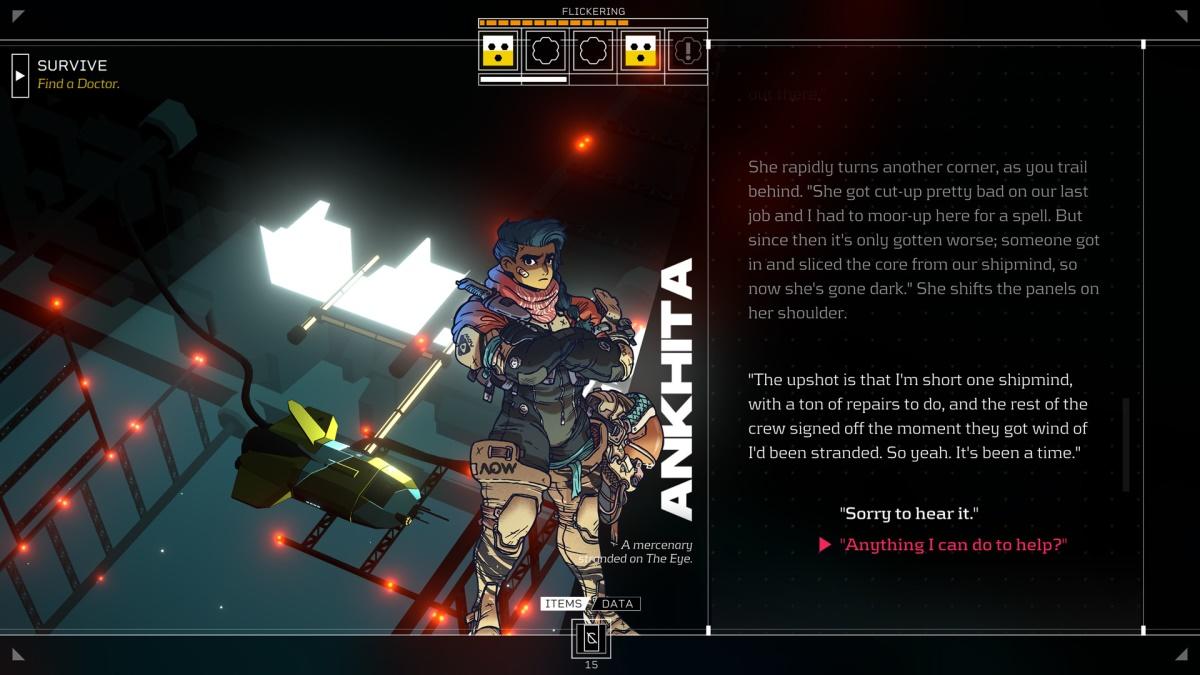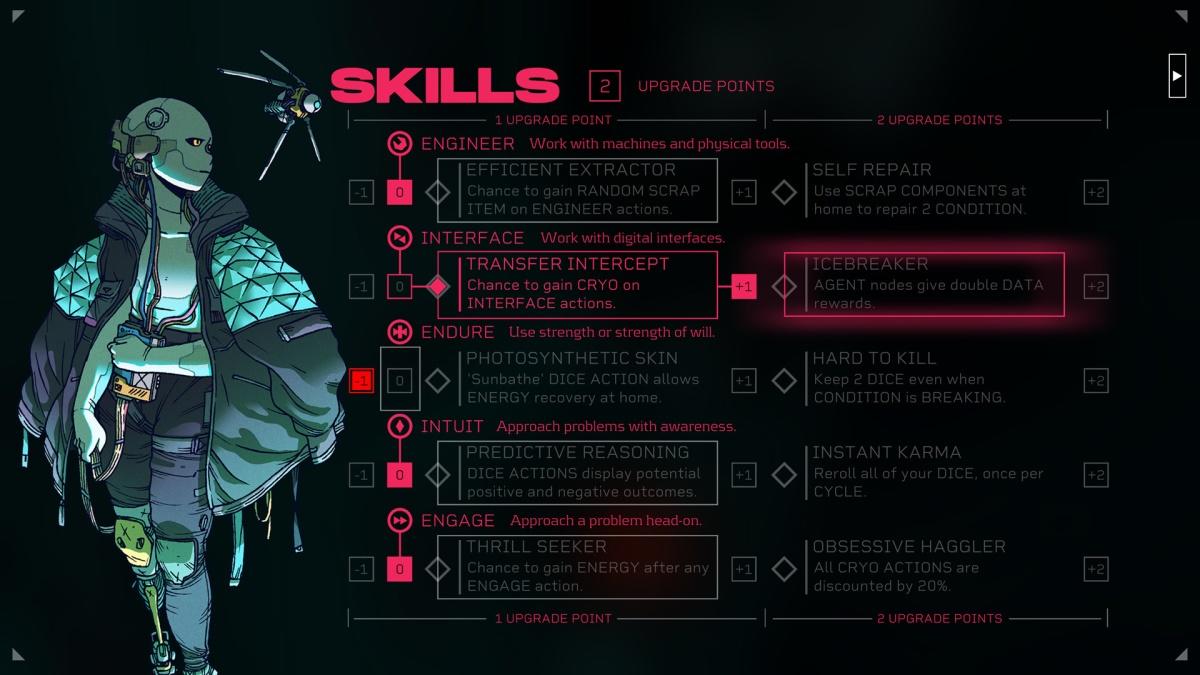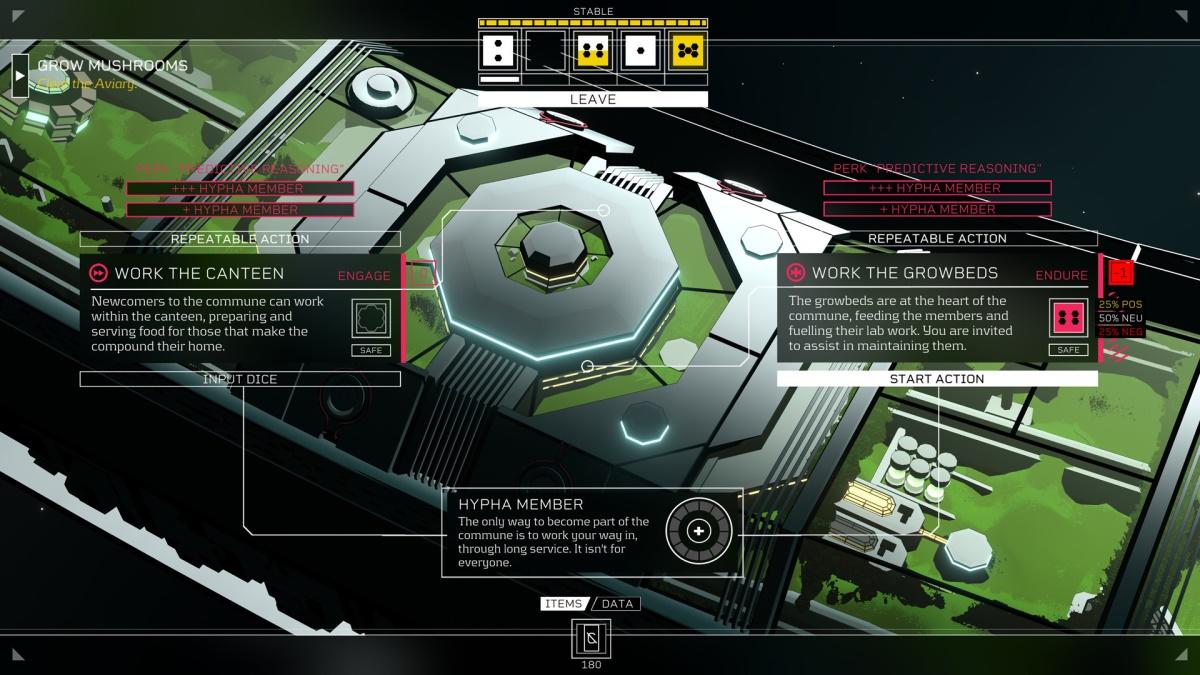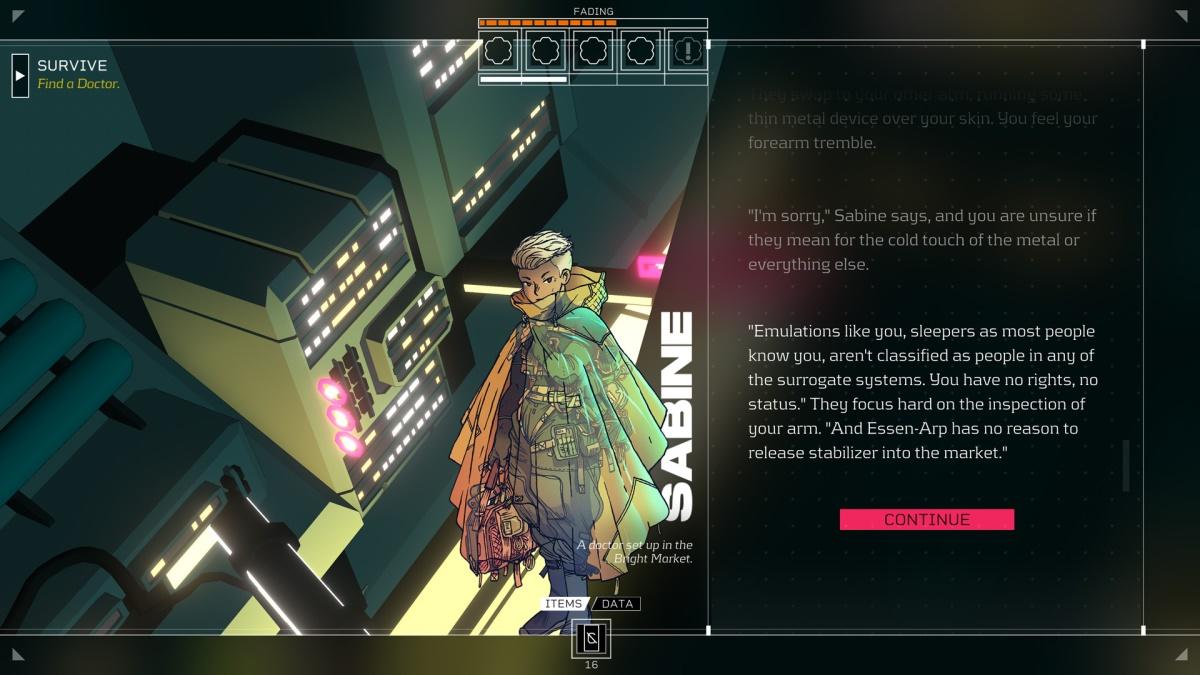Citizen Sleeper Review: Electric Sheep and Other Dreams
Citizen Sleeper from In Other Waters developer Jump Over the Age (a one-person studio composed of Gareth Damian Martin) scratches so many itches – including ones it seemingly created for me in the first place – that it's hard to succinctly describe. It's a tabletop-inspired, cyberpunk story that casts players as a singular cog in a vast, networked machine. It's about agency, and survival, and dreams both figurative and literal. It's a bit about life, a bit about death, and a bit about everything between. And I could not put it down.
Citizen Sleeper takes place entirely on Erlin's Eye, a somewhat-broken circular space station abandoned following the collapse of the corporation controlling it. Well, "abandoned" insomuch that the capitalists capitulated and went elsewhere for the time being. In its place, an unruly alliance of disparate ideals and factions sprung up with the goal of keeping the station out of corporate control for as long as possible. It's not perfect, but it's home to folks that know nothing else.

Enter the player, an emulated consciousness – Sleeper – inside a robotic body owned by Essen-Arp, a giant corporation that only cares about exploiting you. It is clear from the start that the framework of existence within Citizen Sleeper is fundamentally broken, but that life goes on anyway and there is beauty to be found within it. While the game offers different classes, the broad strokes are the same: you've arrived on Erlin's Eye with nothing but your skills, hazy memory of the person you were before emulation, and a body that's designed to break down without regular maintenance.
Mechanically, this sets up the initial set of "drives" in Citizen Sleeper. Rather than quests, drives are basically certain stories that players can prioritize, and completing any drive offers one single additional skill point. Drives are often chained together, which means that certain stories don't unlock until other drives are completed. For example, freeing a rogue, sentient AI from its confines opens up further stories along that same path. While it can be limiting at first, it also feels like a very organic sort of way for everything to happen; there are always consequences.

Skills in Citizen Sleeper are extremely straightforward in that there are only five (Engineer, Interface, Endure, Intuit, and Engage) that are then used for every kind of action. The station is full of different areas with a variety of actions available, and each one uses one of the five skills. But there's a significant element of time to all of this that complicates things further.
Actions in the game are granted per cycle following rest, and each rest grants a number of dice that are available based on the current status of the character's body. The worse the status of your body, the fewer action dice are granted. And those action dice aren't equal, either; they are randomly generated from one to six with higher numbers granting a higher chance of success.

Add to all of this that essentially each possible task or location has ticking clocks that track progress and you make a complex, but not convoluted, system out of a series of simple ones. Clocks like this should be familiar to folks that have played tabletop games like Blades in the Dark or Apocalypse World or any of the other titles that use the Powered by the Apocalypse framework. These can track positive or negative outcomes like, say, a bounty hunter sent by Essen-Arp showing up or work on a starship heading out to another planet concluding.
With all of the above in place, Citizen Sleeper is largely a series of choices. The story unfolds in a style similar to a visual novel with text overlaid on the right side of the screen that in part reads like a tabletop GM reading out narration and in part like your Sleeper's innermost thoughts. Different choices lead to different outcomes, and succeeding or failing an action using dice that aren't quite up to the task or skills you aren't proficient with are both, somewhat surprisingly, equally satisfying. At no point did I ever feel as if I had wasted my time, even if I had failed to accomplish what I set out to do. In part, the failing sometimes seemed to be the point.

It also helps that the vast array of folks living on Erlin's Eye are charming, occasionally despicable, but always understandable. Everyone's just trying to make a better life for themselves, and sometimes that includes mistakes, intentional or otherwise, along the way. Prior to knowing anything else about Citizen Sleeper, one point in its favor was that it features incredible character art by Guillaume Singelin. He's known online for a solid social media presence filled with detailed illustrations full of muted colors. Thanks to Singelin's hard work, all of Citizen Sleeper's characters ooze with personality while also feeling somehow shadowed by Erlin's Eye. Singelin's designs make for an eclectic mix of people, which is exactly the sort of assortment you might expect to find on a chaotic station at the edge of space.
While the mechanics, story, and characters all gripped me and wouldn't let go – more than once I found myself thinking, "Just one more cycle before bed" – a few bugs and other oddities prevented it from being an entirely smooth experience. On the Nintendo Switch at least, the game had trouble with its multiple overlays and more than once I was forced to quit out of the menu for assigning skills because it somehow thought I was trying to navigate the map instead. And as for navigating the map, it is relatively simple but tedious as it effectively spins Erlin's Eye to whatever section you're looking for rather than, say, always immediately snapping to the next possible interactable node.
Citizen Sleeper has captured my imagination in a way that few video games do. Thoughts of characters met and what could have been have percolated through my mind since finishing a playthrough after roughly five hours, which I did with an urgency not typical of me. If you're looking for something different, something that feels both fresh and timely and often beautiful and sometimes horrifying with its implications, Citizen Sleeper is all of those things and more. Even now, I hope I made the right decisions even with the full understanding that the game itself regularly insists that such a thing might not even exist.
Rating: 4.5 out of 5
Citizen Sleeper is set to release for the Xbox Series X, Xbox Series S, Xbox One, Nintendo Switch, PC, and Mac on May 5th. A Nintendo Switch code was provided by the publisher for the purpose of this review, and it was reviewed on a Nintendo Switch OLED.